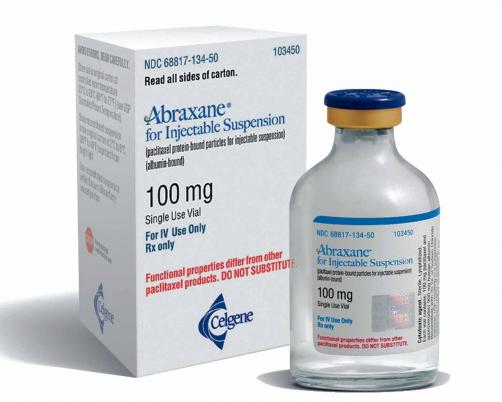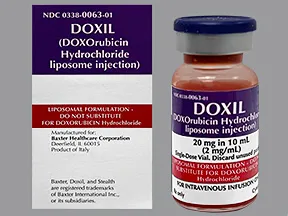How Nanotechnology Could Revolutionize Cancer Treatment
Nanotechnology is the study of materials at the atomic and molecular scale. It has the potential to revolutionize many fields, including medicine. In the field of cancer, nanotechnology has the potential to improve cancer diagnosis, treatment, and prevention.
How can nanotechnology be used to diagnose cancer?
One way that nanotechnology can be used to diagnose cancer is through the use of biomarkers. Biomarkers are molecules that are found in higher levels in cancer cells than in normal cells. Nanoparticles can be used to detect these biomarkers in blood or other bodily fluids. This can help doctors to diagnose cancer earlier, when it is more treatable.
For example, gold nanoparticles have been used to detect cancer biomarkers in blood samples. The nanoparticles are coated with antibodies that specifically bind to the biomarker. When the nanoparticles bind to the biomarker, they change color. This change in color can be detected by a simple optical assay.
Another way that nanotechnology can be used to diagnose cancer is through the use of imaging techniques. Nanoparticles can be used to create contrast agents that make tumors more visible on imaging scans. This can help doctors to see tumors that are too small to be seen with traditional imaging techniques.
For example, iron oxide nanoparticles have been used to create contrast agents for magnetic resonance imaging (MRI). The nanoparticles are attracted to the magnetic field of the MRI scanner. This makes the tumors appear brighter on the MRI scan, making them easier to see.
How can nanotechnology be used to treat cancer?
Nanoparticles can also be used to deliver cancer drugs to tumors. This can help to improve the efficacy of cancer drugs and reduce their side effects.
There are two main ways that nanoparticles can be used to deliver cancer drugs: passive targeting and active targeting.
- Passive targeting is based on the fact that tumors have leaky blood vessels. This means that nanoparticles can easily pass through the walls of tumor blood vessels and enter the tumor.
- Active targeting uses nanoparticles that are specifically designed to bind to cancer cells. This can be done by coating the nanoparticles with antibodies that specifically bind to cancer cell surface proteins.
Once the nanoparticles have entered the tumor, they can release their cancer drugs. This can kill the cancer cells and shrink the tumor.
How can nanotechnology be used to prevent cancer?
Nanoparticles can also be used to prevent cancer. For example, nanoparticles can be used to deliver vaccines to the body. This can help to train the immune system to fight cancer cells.
Nanoparticles can also be used to deliver drugs that can block cancer-causing genes. This can help to prevent cancer from developing in the first place.
Nanotechnology has the potential to revolutionize the way we diagnose, treat, and prevent cancer. However, more research is needed to develop safe and effective nano-based cancer therapies.
Here are some of the challenges that need to be addressed before nanotechnology can be widely used in cancer treatment:
- Safety: Nanoparticles can be toxic to cells. More research is needed to ensure that nano-based cancer therapies are safe.
- Efficacy: Nanoparticles need to be able to deliver cancer drugs to tumors with high efficiency. More research is needed to improve the efficacy of nano-based cancer therapies.
- Cost: Nano-based cancer therapies are expensive to develop and manufacture. More research is needed to reduce the cost of nano-based cancer therapies.
Despite these challenges, nanotechnology has the potential to make a significant impact on the treatment of cancer. With further research, nano-based cancer therapies could become a standard treatment for cancer in the future.
Few examples of nano-based cancer therapies that are currently in clinical trials:
- Abraxane: Abraxane is a nanoparticle-based chemotherapy drug that is approved for the treatment of breast cancer, pancreatic cancer, and non-small cell lung cancer. Abraxane is made from the protein albumin, which is coated with the chemotherapy drug docetaxel. The albumin helps to protect the docetaxel from being broken down in the bloodstream, which allows it to reach the tumor more effectively.

- Doxil: Doxil is another nanoparticle-based chemotherapy drug that is approved for the treatment of breast cancer, ovarian cancer, and multiple myeloma. Doxil is made from the lipid molecule PEGylated liposome, which is coated with the chemotherapy drug doxorubicin. The PEGylated liposome helps to protect the doxorubicin from being broken down in the bloodstream, which allows it to reach the tumor more effectively.

- Gene therapy: Several gene therapy trials are currently underway for the treatment of cancer. In one trial, nanoparticles are being used to deliver a gene that codes for a protein that can kill cancer cells. In another trial, nanoparticles are being used to deliver a gene that can repair DNA damage.
- Nanocarriers: Nanocarriers are a type of nanoparticle that can be used to deliver drugs, genes, or other therapeutic agents to cancer cells. Nanocarriers are made from a variety of materials, including polymers, lipids, and metals. They can be designed to target specific cancer cells or to release their payloads in a controlled manner.

Nanosensors: Nanosensors are a type of nanoparticle that can be used to detect cancer cells or to monitor the response to treatment. Nanosensors are made from a variety of materials, including polymers, metals, and quantum dots. They can be designed to detect specific biomarkers or to measure changes in the tumor environment.
These are just a few examples of the many nano-based cancer therapies that are currently in clinical trials. With further research, nanotechnology has the potential to revolutionize the way we treat cancer.






















































